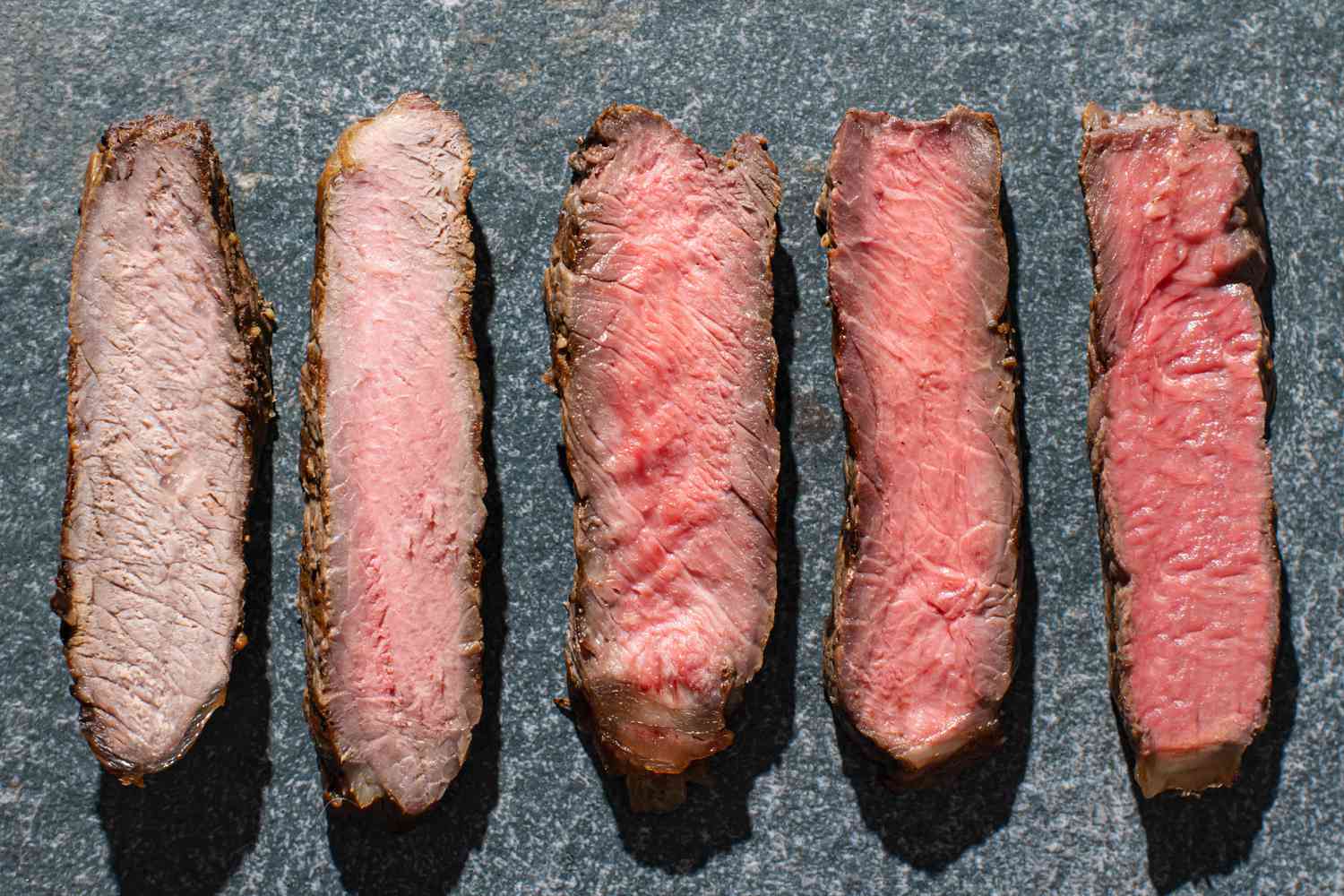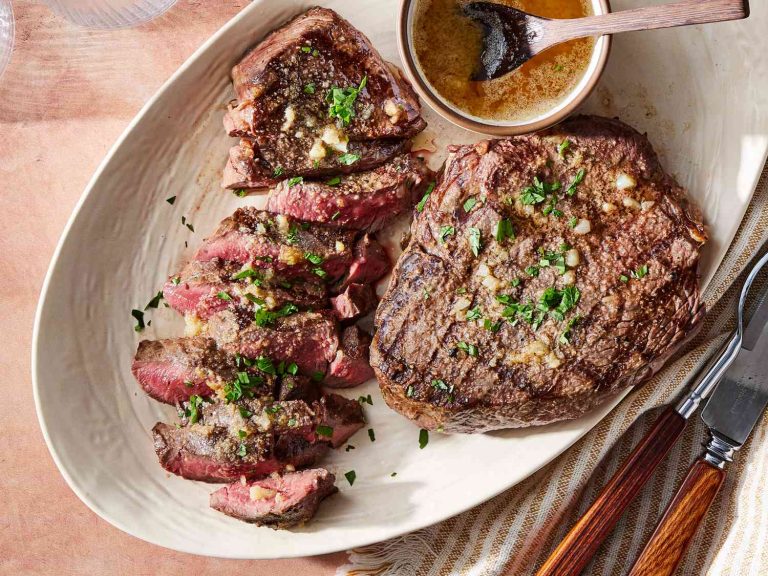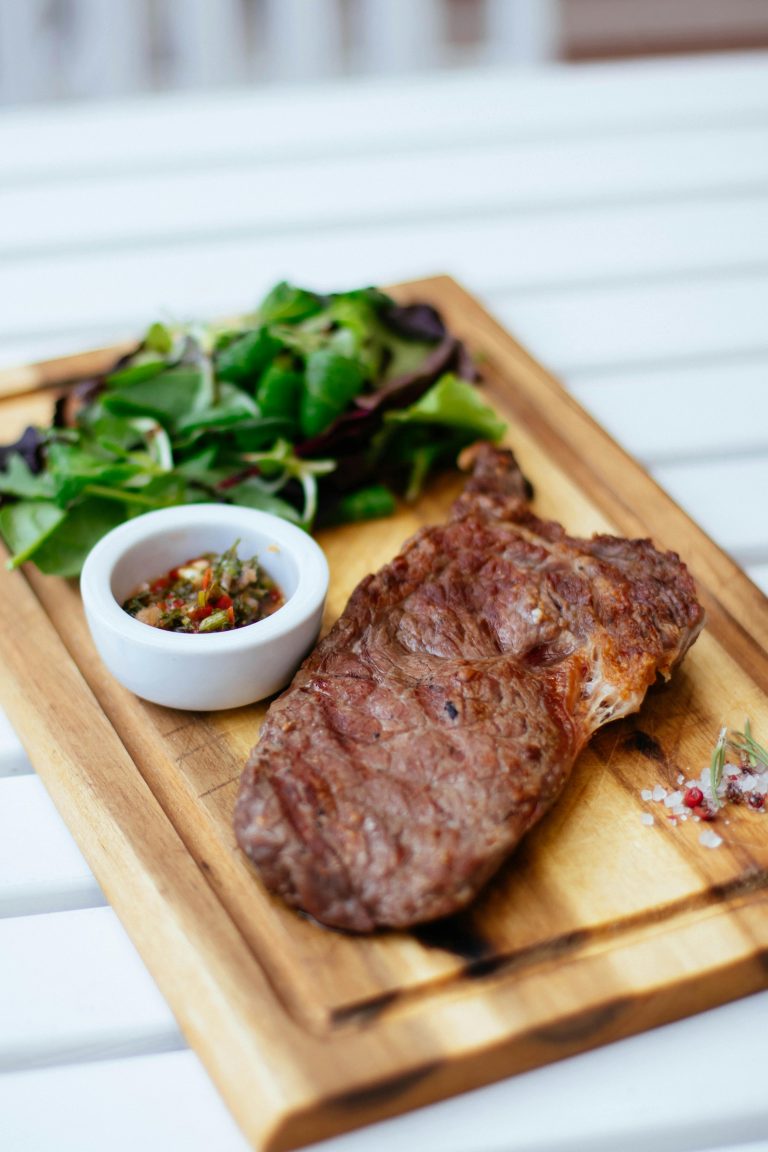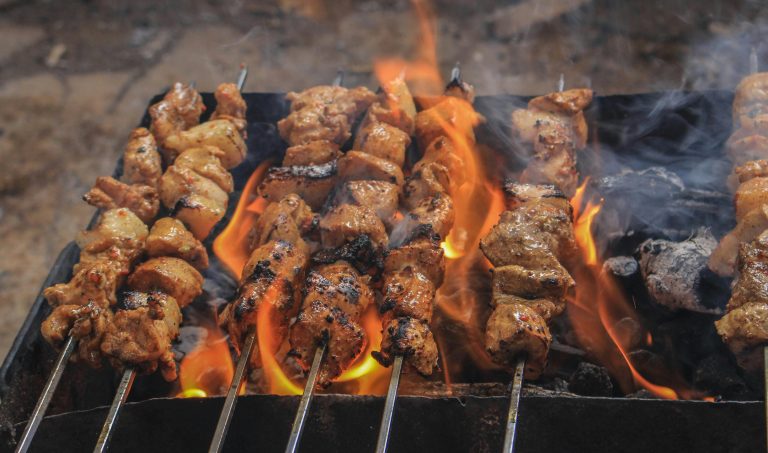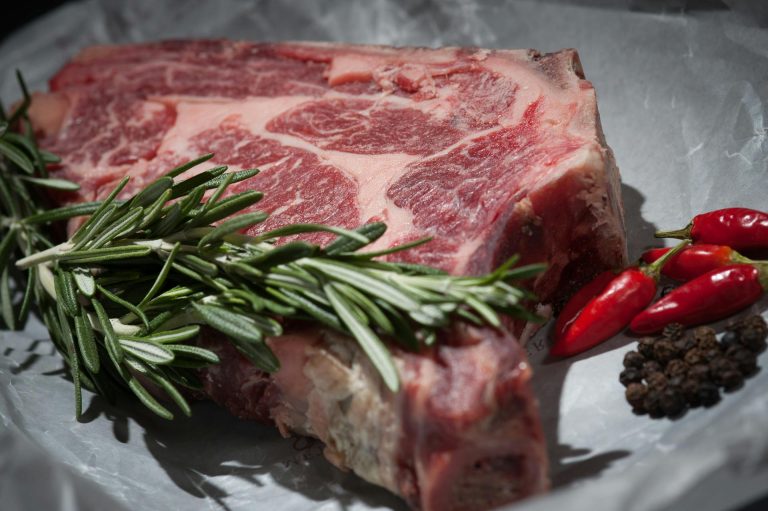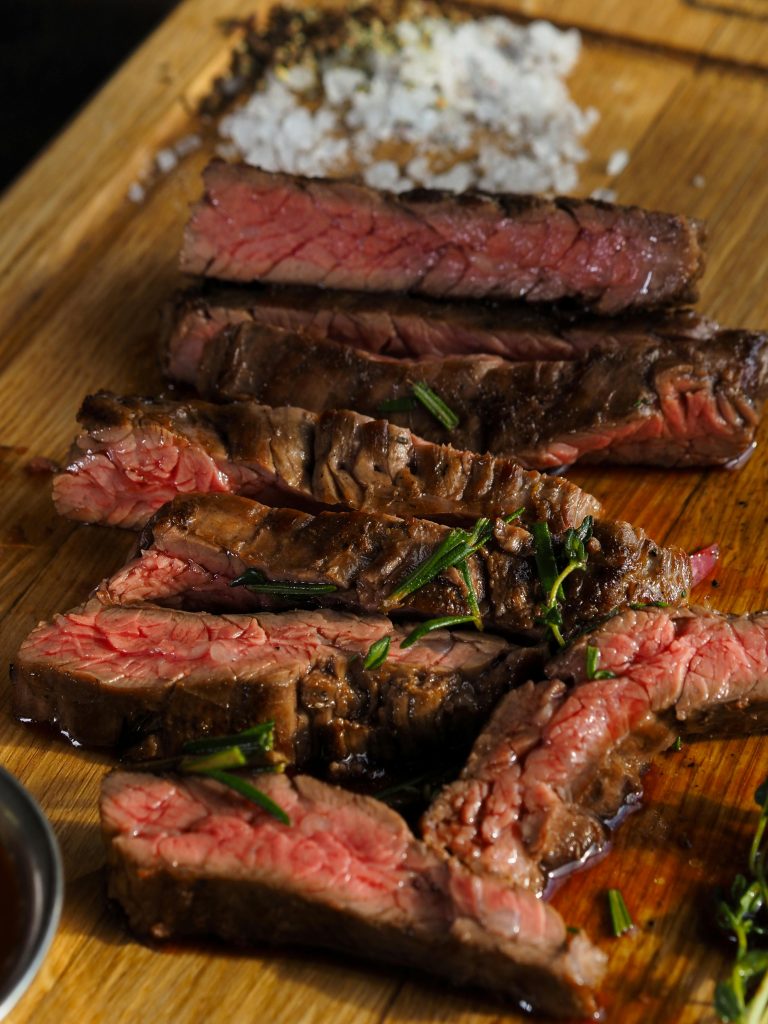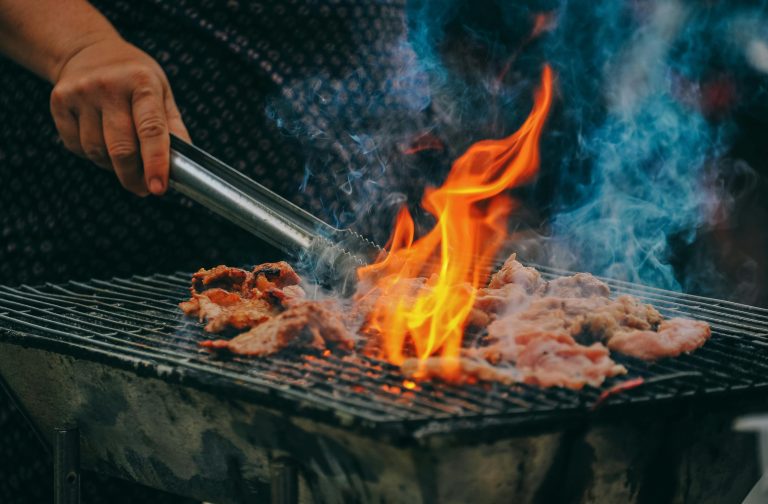Comprehending Temperatures, Textures, and Methods for All Preferences, from Uncommon to Expert
It takes both art and science to cook the ideal steak. Choosing the cooking method for your steak—grilling, pan-searing, or broiling—is one of the most important choices. Each level of steak doneness—rare to well-done—has unique flavor, texture, color, and internal temperature characteristics.
This thorough guide explains the different steak doneness levels, how to consistently attain them, and what distinguishes each level. Knowing the subtleties of doneness will improve your cooking and help you enjoy this popular cut of meat more, whether you’re a foodie or this is your first time making steak.
The Importance of Temperature in Steak Doneness
Steak doneness is measured by internal temperature. Using a meat thermometer is the most accurate way to determine when your steak has reached the desired level. While cooking time and visual cues can be helpful, internal temperature is the gold standard for consistency.
Here is a quick overview of steak doneness temperatures:
- Rare: 120°F to 125°F (49°C to 52°C)
- Medium-Rare: 130°F to 135°F (54°C to 57°C)
- Medium: 140°F to 145°F (60°C to 63°C)
- Medium-Well: 150°F to 155°F (66°C to 68°C)
- Well-Done: 160°F and above (71°C and above)
Note: Remove steaks from heat about 5°F before the target temperature, as they will continue to cook while resting.
Rare Steak (120°F to 125°F)
Appearance and Texture:
A rare steak is seared on the outside but remains cool and red in the center. The texture is soft, very tender, and juicy, with a pronounced beef flavor due to minimal cooking.
Ideal For:
People who enjoy a more raw texture and rich, beef-forward taste. Best suited for high-quality cuts such as tenderloin or ribeye.
Cooking Method:
Sear the steak for 1 to 2 minutes per side over high heat. Use a thermometer to avoid overcooking. Rest for at least 5 minutes before serving.
Warning:
Undercooked meat may carry health risks if not handled or cooked properly. Use only fresh, high-quality beef.
Medium-Rare Steak (130°F to 135°F)
Appearance and Texture:
This is often considered the gold standard for steak doneness. The center is warm and red, surrounded by a pink ring. It is extremely tender and juicy, with a slight chew but plenty of moisture.
Ideal For:
Steak lovers who want a balance between raw and cooked meat. Suitable for almost any steak cut.
Cooking Method:
Sear for 2 to 3 minutes per side on high heat. Check with a thermometer and rest the steak before slicing.
Why It’s Popular:
It maintains flavor, texture, and juiciness, making it the most preferred doneness level among chefs and steak enthusiasts.
Medium Steak (140°F to 145°F)
Appearance and Texture:
The center is warm and pink, with more grayish-brown edges. The steak is still juicy but noticeably firmer. It’s a good middle-ground for those who want more cooked meat without losing too much moisture.
Ideal For:
Those who are hesitant about red meat but still want a flavorful, juicy steak. Also good for thicker cuts where heat needs to penetrate more.
Cooking Method:
Cook for 3 to 4 minutes per side over medium-high heat. Monitor the internal temperature carefully.
Balance of Qualities:
This level retains some tenderness and flavor while catering to those who prefer less redness in their meat.
Medium-Well Steak (150°F to 155°F)
Appearance and Texture:
A medium-well steak has only a hint of pink in the center. The meat is mostly gray-brown throughout and noticeably firmer and drier. Juices are minimal, and the flavor can be less intense than rarer preparations.
Ideal For:
Individuals who prefer well-cooked meat without it being fully dry. Works better with fattier cuts like ribeye, which retain some moisture.
Cooking Method:
Cook each side for 4 to 5 minutes and use a thermometer to confirm doneness. Let the steak rest to allow juices to redistribute.
Best Practices:
Use marinades or compound butters to help retain moisture and enhance flavor at this doneness.
Well-Done Steak (160°F and above)
Appearance and Texture:
Completely brown or gray throughout with no pink. The texture is very firm and the moisture content is low. Can be chewy or tough, depending on the cut and cooking method.
Ideal For:
Those who are concerned with food safety or simply prefer thoroughly cooked meat. Less suitable for lean cuts, as they can become overly dry.
Cooking Method:
Cook on medium heat for longer periods to avoid burning the exterior while ensuring the inside is fully cooked. Steaks should be monitored closely to avoid charring.
Enhancing Well-Done Steaks:
Choose well-marbled cuts and consider basting with butter or oil to help maintain tenderness.
Resting the Steak: A Crucial Step
Regardless of the desired doneness, allowing your steak to rest after cooking is essential. Let it sit for 5 to 10 minutes under loosely tented foil. This resting period allows the juices to redistribute throughout the meat, ensuring that each bite is moist and flavorful.
Tips for Perfect Steak Cooking
- Start with Room Temperature Meat:
Letting your steak come to room temperature before cooking helps it cook more evenly. - Use High Heat for Searing:
A hot pan or grill helps develop a flavorful crust through the Maillard reaction. - Season Simply:
A generous amount of salt and freshly ground pepper is often enough. For added flavor, consider using garlic, rosemary, or a dry rub. - Use a Meat Thermometer:
This tool removes the guesswork and ensures consistent results. - Choose the Right Cut:
Different cuts respond better to different levels of doneness. For example, filet mignon remains tender even when cooked well-done, while sirloin may become tough.
Final Thoughts
The perfect steak is a matter of personal preference, and understanding the levels of doneness allows you to tailor each preparation to taste. Whether you prefer the cool, ruby-red center of a rare steak or the firm, fully cooked texture of a well-done cut, knowing how to achieve your ideal level of doneness is key to a successful and satisfying steak experience.
From home kitchens to fine dining establishments, mastering steak doneness not only improves your culinary skills but also enhances the enjoyment of one of the most cherished meals. Pair it with the right side dishes, sauces, or beverages, and you elevate a simple steak into a complete dining experience.

